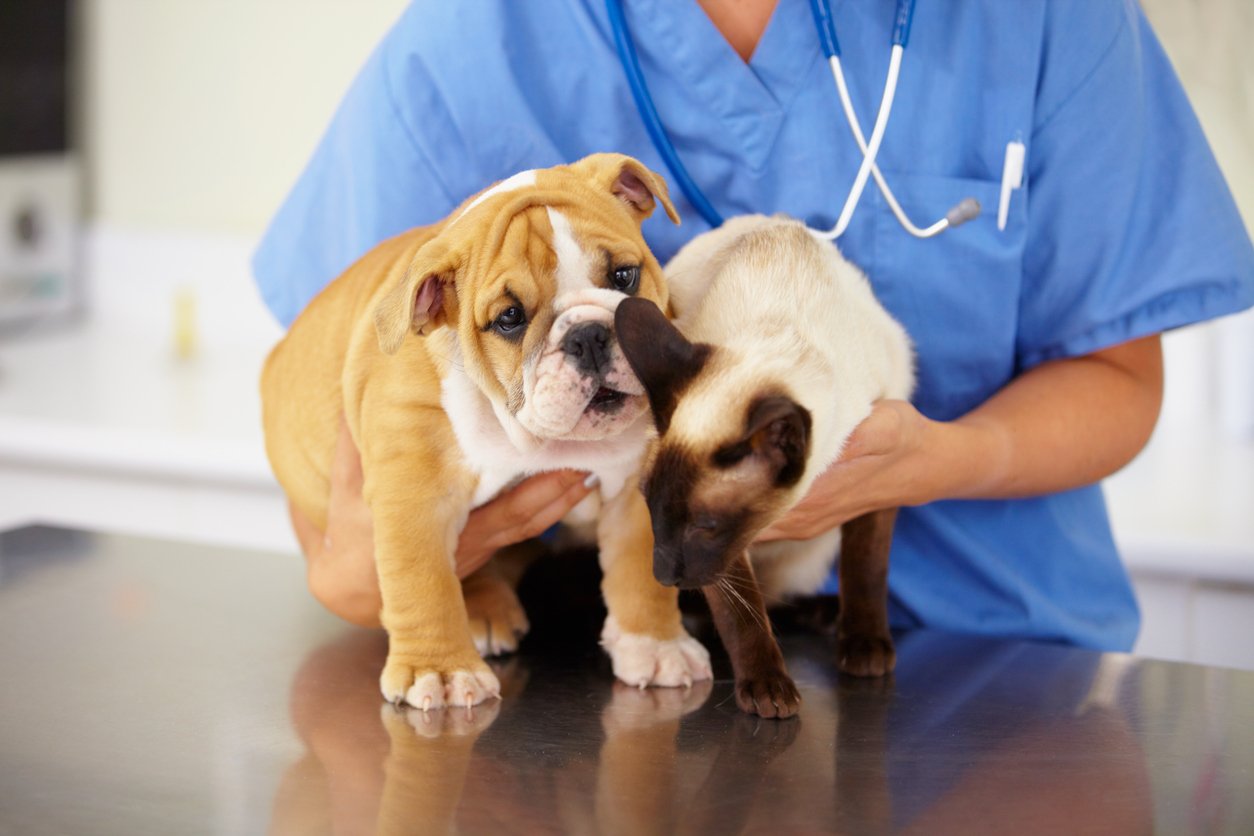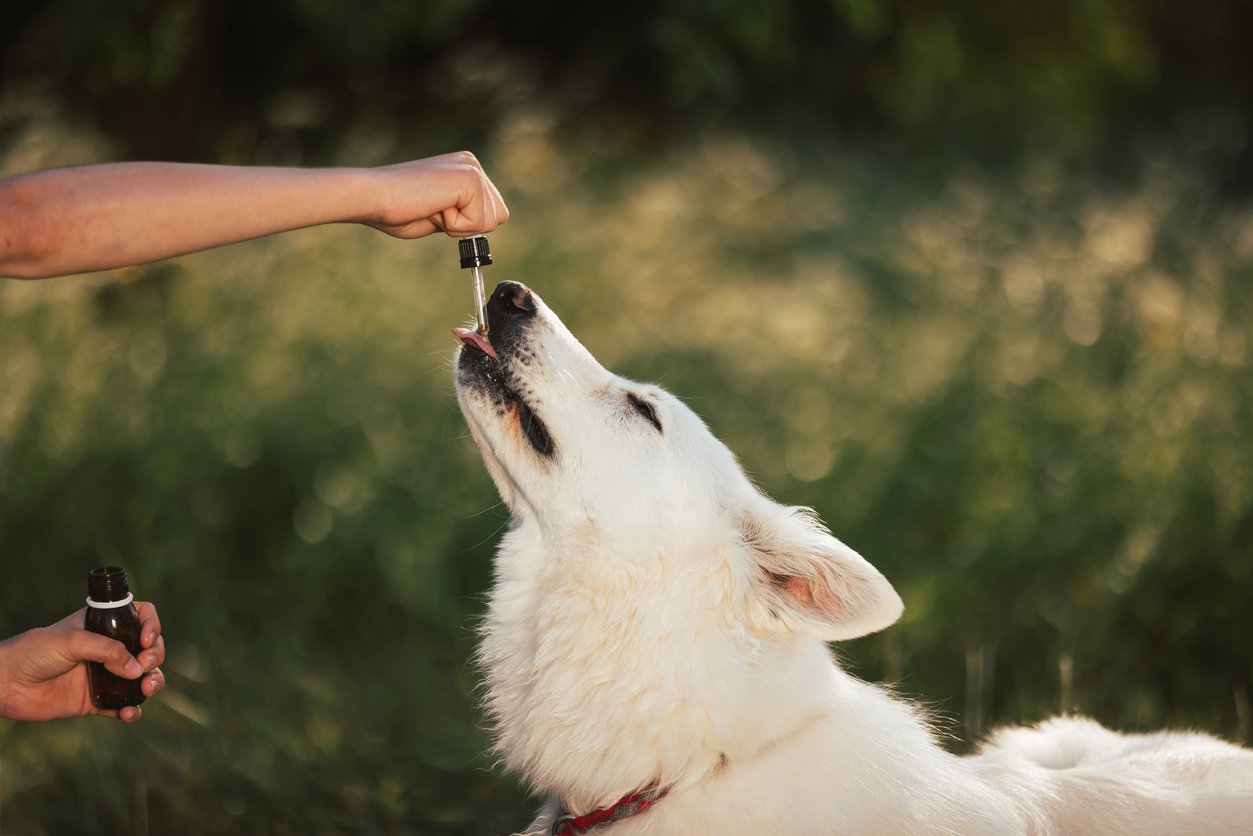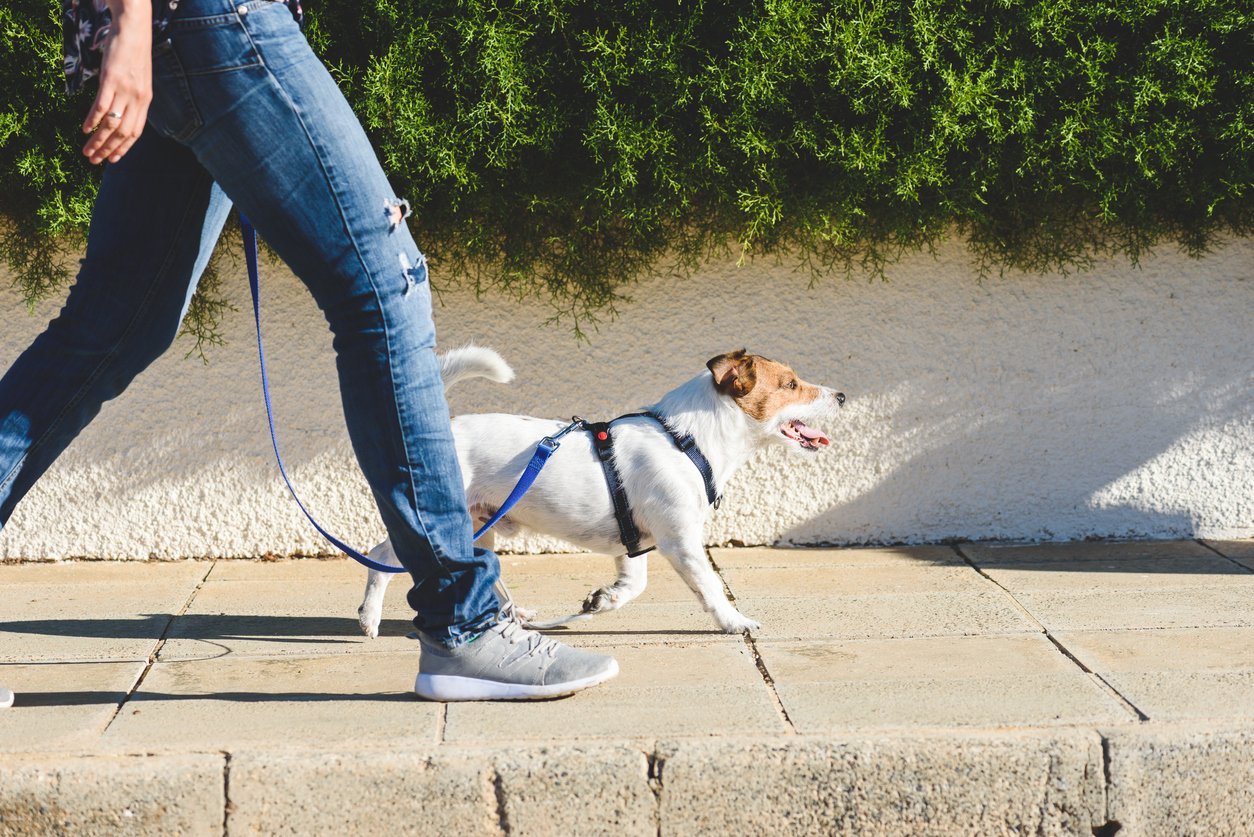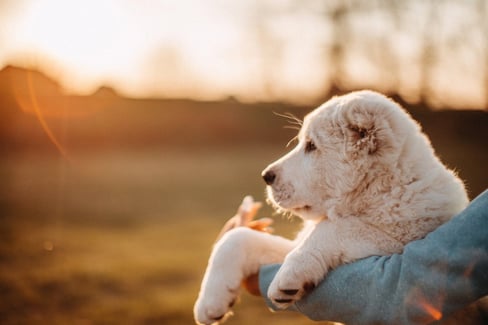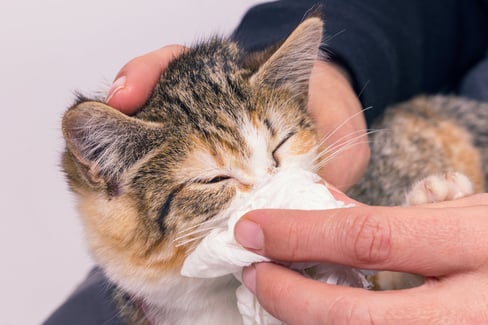Table of Contents
Keeping your animals in tip-top shape is hard work, especially if you’re a new pet owner.
The only thing you know for sure is that you love them to bits.
However, when it comes to their health, it’s all a bit hazier.
What potential issues should you look out for? How can you prevent them? And how can you treat them? And, by the way, what is animal health, exactly?
Tough questions.
But don’t panic; we’re here to help. 🦮🧑
And that’s why we visited our animal health partners and asked them for advice on how to keep your four-legged friend happy and active for years to come.
We then summarized our findings in this handy article that covers:
- General tips for all animal owners
- Six species-specific tips: two for dogs, two for cats, and two for horses
- An overview of preventative and treatment measures
If you’re low on time and well-versed in animal health, feel free to scroll straight down to the section about your animal’s species…
If not, we highly recommend you enjoy the entire post and really boost your general knowledge. There’s no harm in learning what the vets are saying!
General Tips on Animal Health
When it comes to caring for animals, there’s some generic advice that works regardless of the type of animal you own and love.
Some people call it common sense, others experience — it all depends on how many animals they had the pleasure of looking after!
Either way, these universal tips are crucial for your animal’s well-being, so pay close attention:
- Always feed your pets a healthy diet well-suited to their species’ nutritional needs — i.e., cats are obligate carnivores that need high-quality meat in their diets, while horses are herbivores built for chewing tons of grass and hay.
- Never let your animals get overweight or obese — this unnecessary strain puts their bodies at an increased risk of diseases like heart problems, joint issues, and diabetes.
- Schedule regular visits to the veterinarian — a trained professional is the best person for diagnosing health issues before they become serious problems!
- Keep a close eye on your pets while they roam, play, and exercise — injuries and/or accidentally ingesting something harmful are always on the cards.
- Take good care of your animals’ mouths and teeth — proper oral health is key for maintaining strong bodies and avoiding painful (and expensive) conditions.
Sounds easy enough, right?
We think so too, so go ahead and turn each one of them into a rock-solid habit.
Now, with these basic points out of the way, it’s time to deep dive into our species-specific tips. These will help you go the extra mile in preventing disease and maintaining optimal animal health levels.
Let’s begin with man’s best friend, dogs, before moving on to cats and horses!
Dogs: Health Tips and the Use of Animal Health Supplements
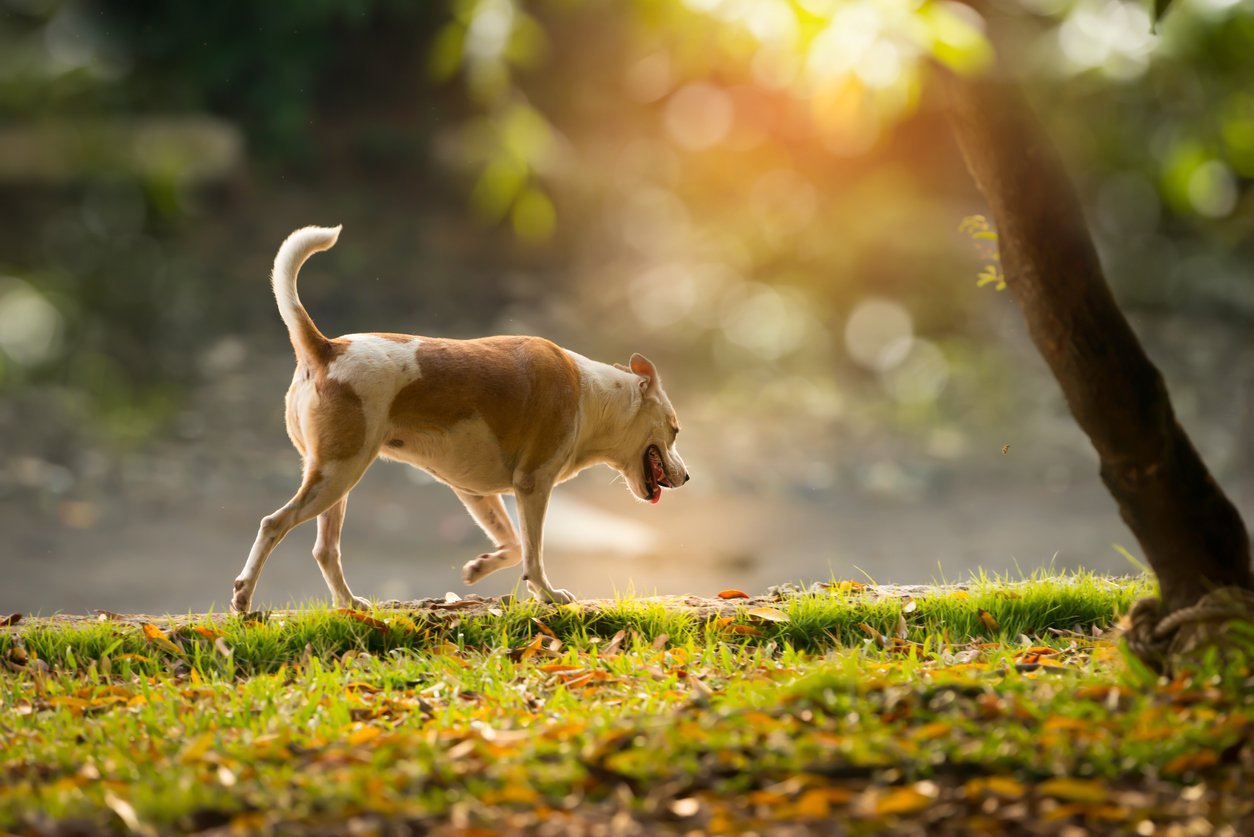
1. Keep an Eye Out for Luxating Patella and Arthritis
Luxating patella and arthritis are two of the most common ailments in dogs.
Both can be extremely painful, limit mobility, and ultimately ruin your pup’s quality of life.
Ouch.
But don’t be sad; you can help your dogs out.
And we’ll get to that in a second, but first, let’s explain what these illnesses are and what symptoms you should watch out for.
Luxating patella is a painful condition in which your dog’s kneecap (their patella) slides out of its protective housing. It’s essentially the same as a dislocated kneecap in humans.
While this ailment can affect all types of dogs, it’s small breeds like Yorkies, Boston Terriers, and Chihuahuas that are the most likely to develop it.
Arthritis is a chronic disease that causes inflammation, swelling, and pain in your dog’s joints.
It’s caused by the progressive and irreversible deterioration of cartilage, synovial fluid, and bone in articulations.
And it’s incredibly prevalent: studies have shown that 25% of our canine buddies are diagnosed with arthritis, and 60% show radiographic evidence of its adverse effects.
Symptoms of both conditions include:
- Limping or avoiding the use of one or more legs
- A lack of energy and enthusiasm
- Difficulties moving, jumping, or doing stairs
- Excessive licking of their joints and kneecaps
- Swelling and pain
Unfortunately, preventing arthritis and luxating patella isn’t always possible. Sometimes genetic predispositions are too strong.
However, as a loving owner, you should still try your very best.
In the best-case scenario, you’ll avoid these two diseases altogether, while in the worst-case one, you’ll still slow them down and make your dog’s life much more comfortable.
It’s absolutely worth it either way.
So what should you do?
Our animal health partners recommend you take the following preventive steps from the very first moment you fall in love with your pooch:
- Regular exercise (that’s not overly strenuous)
- A healthy diet
- Glucosamine and chondroitin-based animal health supplements
- An orthopedic bed
- Doggy stairs
And remember that the earlier you start, the better your chances of being successful.
2. Bulldog, Pug, or Big Dog? Then Learn About Hip Dysplasia
Owners of bulldogs, pugs, and big dogs — classified as being over 50 lb (23 kg) heavy and 24” (61 cm) tall — need to be aware of hip dysplasia.
It’s 100% pivot-al. Pun intended.

Smiling dogs aside, hip dysplasia is no laughing matter and something you have to take seriously.
It’s a hereditary deformity in which a dog’s hip joint doesn’t form properly and is misaligned. It can lead to varying degrees of joint looseness, and it affects 16% of dogs (and 77% of bulldogs).
Hip dysplasia usually develops when your puppy is growing up or engaging in extreme forms of exercise such as sledding or agility trials. If left unchecked, it can cause early-onset arthritis and great difficulties moving — problems you definitely want to avoid!
Its symptoms are similar to those we mentioned above for arthritis, with the addition of wobbly walking and a light grating sound coming from the affected hip joint.
A bit more bad news:
Since hip dysplasia is a physical deformity, it isn’t possible to prevent it.
The best course of action we can take as owners is to:
- Watch out for symptoms. They typically present themselves at one to two years of age.
- Rush our dogs to the vet for a definite diagnosis if we notice anything.
If we catch this disorder in its early stages, it’s possible to effectively manage it and alleviate the issues it causes, from pain to limited movement.
But what happens if you aren’t proactive enough?
Surgery and long recovery times are on the cards, so don’t risk it and follow the motto ‘better safe than sorry’ when it comes to your dog’s hips.
Cats: Health Tips and the Use of Animal Health Supplements
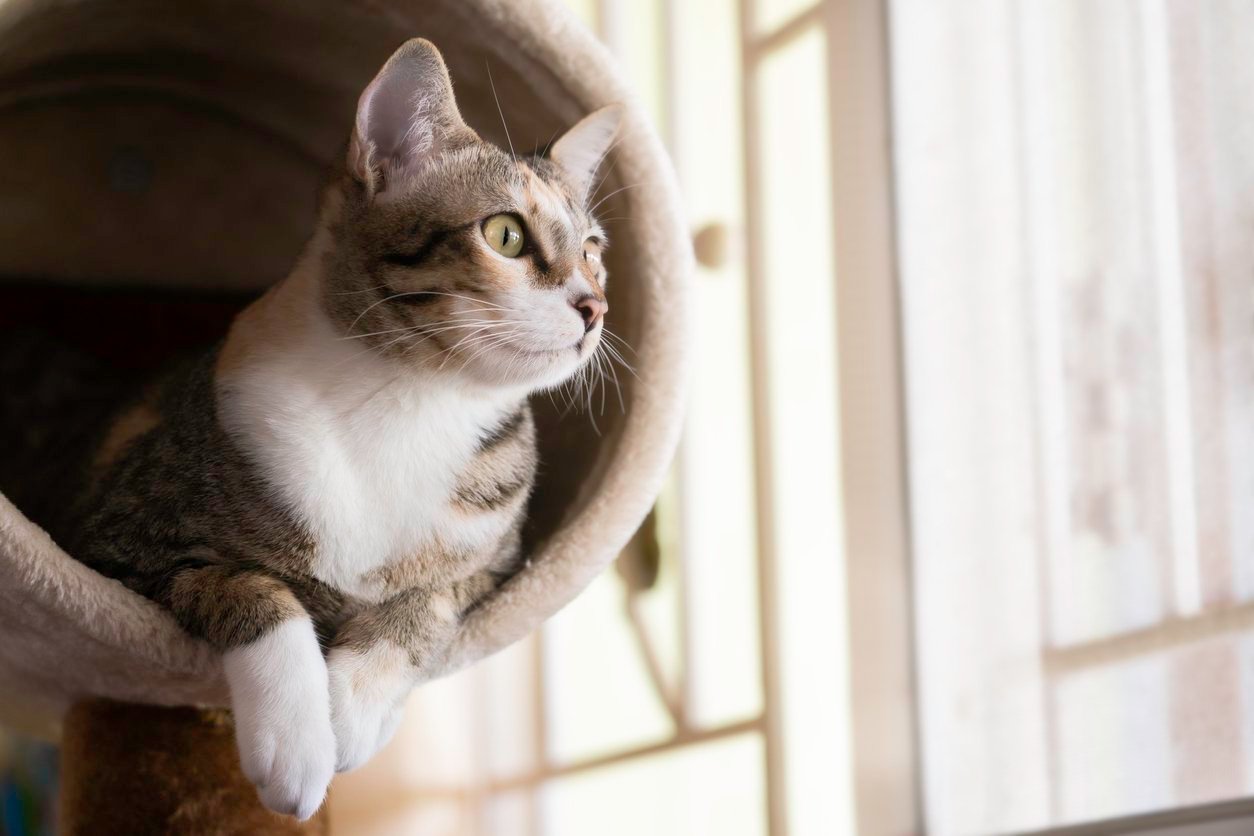
3. Create Safe Spaces for Your Cat To Play and Exercise in
Cats are well-known daredevils with a tendency to overestimate their abilities and injure themselves.
Just check out what this little guy is up to:

Yikes.
So let’s also go out on a ledge and say that you probably don’t want to risk your precious furball hanging out on your balcony’s railing (or in one of your garden’s trees).
But can you do anything to limit their feline fearlessness?
Yes, you can.
Our animal health partners sang the praises of catifying your home as the best way to keep your cat safe from the dangers of playing, hunting, and resting in hazardous locations.
And how exactly can you catify your house?
Simple:
Turn one of your rooms (or your terrace) into a feline-approved playground. Make use of fun objects like shelves, cat toys, hammocks, cat trees, climbing poles, and ropes.
And then set aside 10 minutes every day to play with your pet. They particularly enjoy playing ‘cat and mouse’ and ‘cat and bird’ with you maneuvering the distressed toy prey.
If you choose to build this space outside, we suggest you go for an enclosed ‘catio’ that protects your kitty from the outside world and your neighbourhood wildlife from your mini-tiger.
P.S. Joint supplements like TRI-ACTA for Pets go hand-in-hand with catifying your home. They ensure your cat has all the nutrients they need to maintain an injury-resistant musculoskeletal system.
4. Consider a Raw Diet for Your Cats
After we finished talking about ‘catios’ and indoor playgrounds with our animal health partners, another question popped into our minds:
What else can cat owners do to keep their kitties going strong well into their teens (and why not, their twenties too)?
The answer was to move your cats onto a raw diet that’s made up of foods that mimic those their ancestors ate in the wild for millennia.
This diet has an incredible amount of benefits, including:
- Your cat will be healthier — you’ll surely notice a shinier coat, cleaner teeth, and higher energy levels.
- A raw diet eliminates the risk of feline obesity and the host of negative repercussions associated with it.
- You’ll have more control over what your munchkins are eating.
- It’s easy to pre-prepare meals and store them in your freezer.
Sounds good?
You bet your bottom dollar it does!
However, there is one concern we need to mention:
Safety.
Some owners feel uncomfortable feeding raw feeds to their pets because of the pathogens (like Salmonella and E. coli) present in raw food.
They have a valid point.
And although cats have short, acidic digestive tracts made to handle raw meat, responsible owners should take some extra precautions.
These involve only picking cat-approved foods, making sure all raw ingredients are fresh and paying close attention to avoid cross-contamination. This last one is the biggest concern you face — you definitely don’t want to give yourself or your family members a nasty infection.
This cute infographic from our friends over at The Spruce Pets perfectly sums up everything you need to know about feeding your cat diet.
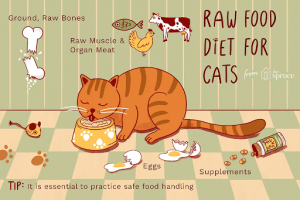
Minus one thing:
A raw diet isn’t indicated for cats with compromised immune systems as the extra load of bacteria might be too much for them.
Horses: Health Tips and the Use of Animal Health Supplements
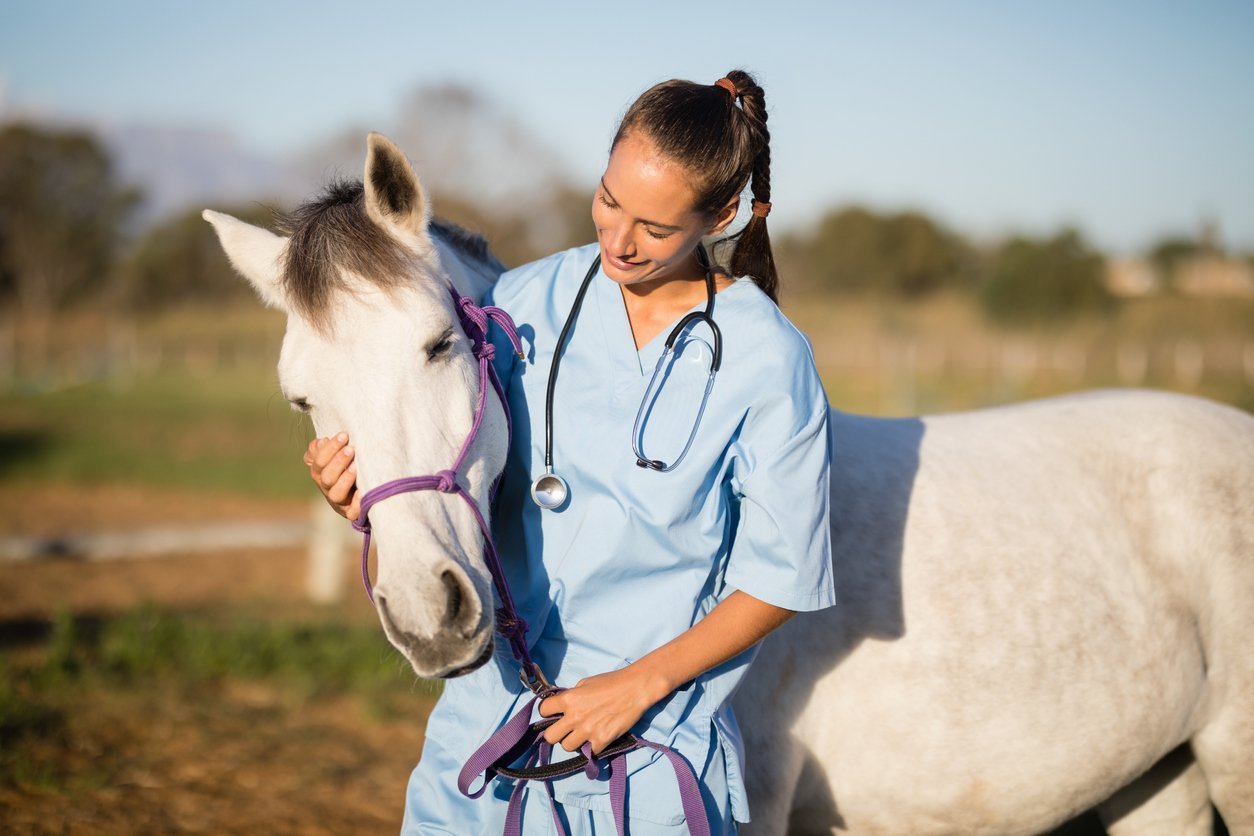
5. Watch Out for Laminitis and Other Debilitating Bone and Joint Conditions
Horses are majestic giants worthy of their fame and glory.
Anyone lucky enough to have met one in person will tell you the same.
However, they aren’t made from stainless steel. Not even the mythical Pegasus was.

Well, okay, this Pegasus is made from steel, but then again, he’s just a statue! 😜
Regular horses aren’t so lucky.
They have a few weak spots — their bones, hooves, and joints.
And laminitis is one of the major chinks in their armour.
It’s a common condition that afflicts over 10% of our equine buddies at least once a year.
But what exactly is it?
It’s an inflammation of the laminae, the soft tissues that connect a horse’s pedal bone to their hoof wall.
If it’s left unchecked and undetected, laminitis could become so severe that it causes the pedal bone to penetrate the sole of their hoof…
And that’s as excruciatingly painful as it sounds.
This means you have to call the vet immediately if you think anything is wrong.
A few common tell-tale signs are:
- Lameness
- Difficulties turning, walking, or trotting
- Strange stances (like the typical ‘rocked back’ pose)
- Divergent hoof rings
- A bounding digital pulse
It’s also good practice to keep your horse at a healthy weight and preventively add joint supplements to their diet. Both can help reduce the risk of laminitis.
But, unfortunately, it isn’t only laminitis you need to worry about…
Our animal health partners also pointed out a range of other bone and joint conditions that you have to know inside-out. These include arthritis, locked stifle joints, and bone injuries (such as bruises, fractures, and cracks).
So read up about them, and, as always, seek veterinary help straight away if you suspect something strange.
6. Sport Horses Need Even More Special Care
This last tip might sound obvious to an experienced owner, but sometimes in life, the most important things are the simplest ones.
Think about it:
A sport horse’s body is placed under extreme stress day in and day out during training and competitions.
Sooner or later, something’s got to give.
Painful conditions like arthritis, desmitis, tendon injuries, and back injuries are lurking behind the corner.
Unless you’re preventatively taking 110% care of your sport horse.
Just like medical and physiotherapy experts take special care of LeBron James.
Both of them are elite athletes that deserve the extra attention and investment necessary to keep them fit and performing at the highest levels.
You’re probably convinced by now, but surely these two questions are racing through your mind:
‘Am I already doing enough? And if not, what should I try?’
Here are seven tips we picked up from professionals from the animal health clinic world.
-
- Build your horse a barn and a paddock worthy of Secretariat himself. These help keep them comfortable and sheltered while also providing plenty of space to roam and graze.
- Feed your horses a high-quality diet at regular times and add premium equine joint supplements to the mix.
- Make sure your vet visits often and knows everything that’s going on with your horse.
- Find a skilled local farrier and schedule regular appointments with them every 3-6 weeks. Remember the saying ‘No hoof, no horses!’
- Always warm-up before training and competitions, and cool down after.
- Integrate lunging and pole work into your exercise routines as they help to improve a horse’s flexibility, suppleness, and balance.
- Don’t forget to take your horse for a fun hack to strengthen your bond, build muscles, and work your horse’s body equally.
Put all of these suggestions into place, and you’ll give your sports horse the best possible chance of avoiding injuries and continuing to dazzle in the equestrian arena.
An Overview of Treatment and Prevention
We’ve just discussed A LOT of tips and tricks…
And we’ve mentioned quite a bit of preventative measures as we went through different bits of advice from our animal health partners.
Do you remember them all?
* Pause for you to scroll back up to the previous sections *
Well, now that you’re back, the answer is yes. 🙃
However, we still think it’s a good idea for us to give you:
- A final recap of the best preventive activities suited to all animal owners
- A quick introduction to a few treatment options your vet might recommend for your pet if their condition worsens.
Keep going; we promise we’ll be quick, and you’ll be back to cuddling with your dog, cat, or horse in no time!
General Preventive Measures
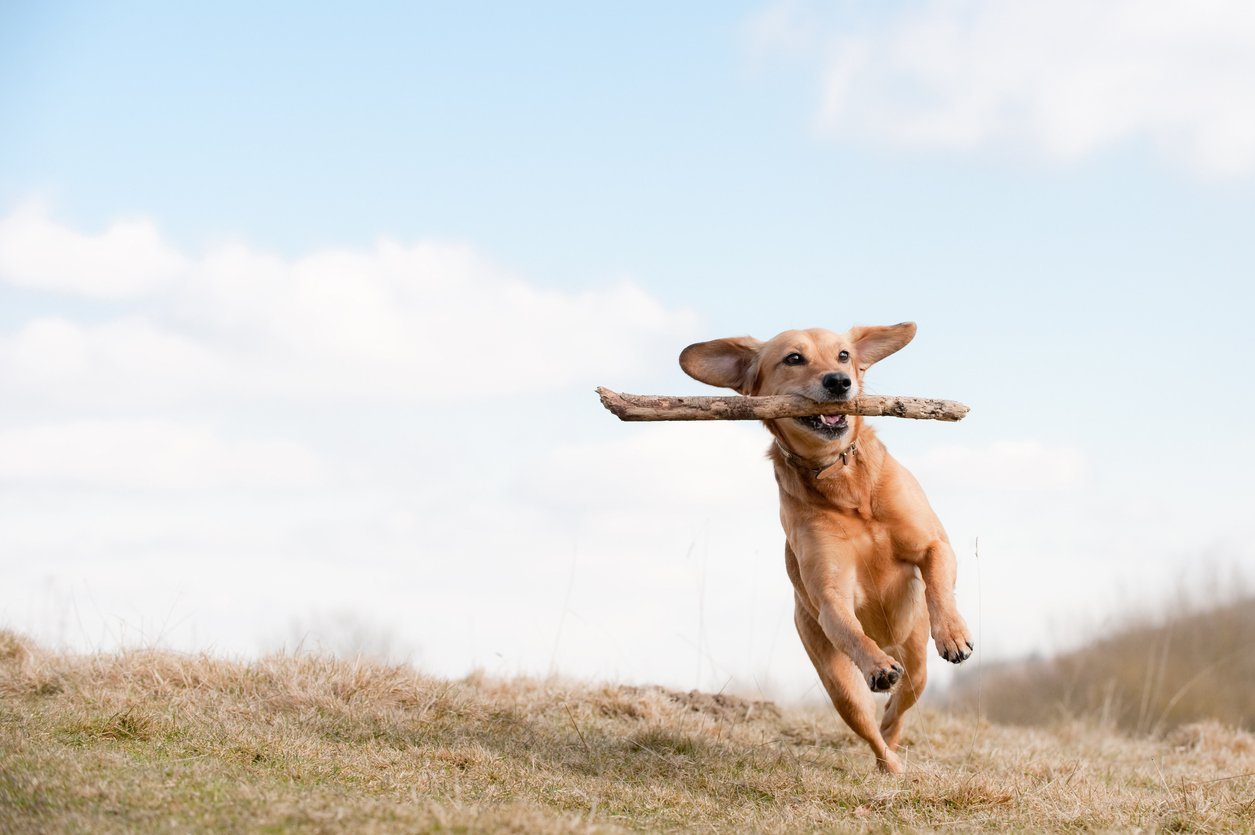
Regular Exercise
We’ve brought up exercise quite a few times in this blog post, and if you consider our entire Integricare Blog, that number shoots up well into the hundreds.
That’s how important it is.
Your animals need to exercise every single day — just make sure it’s not overly strenuous on their articulations, tendons, ligaments, and cardiovascular systems.
It’ll do them a world of good.
A Well-Balanced Diet
Next up in our list of frequently uttered phrases is a ‘well-balanced diet.’
You simply can’t overlook diet because we are what we eat.
If you feed junk to your pet, you can expect an unhealthy, unhappy animal that will suffer through a host of painful (and expensive) health issues.
And nobody wants that, so before feeding, research whatever ends up in your baby’s food bowl and get it approved by your vet.
Plenty of Bonding
Humans, dogs, cats, and horses are all mammals.
Nothing surprising there.
We all breathe, eat, drink water, and enjoy mother’s milk when we’re small.
But there’s also something else that binds us:
All of us need to be surrounded by constant love and affection to thrive.
So drop everything and give your animal a cuddle — it’ll make both of your days!
And then remember to spend some time each and every day making them feel special.
Animal Health Supplements
This is a preventive measure that’s really close to our hearts.
It’s literally the reason we get out of bed in the morning. We want every single dog, cat, and horse to have healthy joints for their entire lives.
With this goal in mind, we manufacture four animal health supplements for our animal pals.
| Supplement | Indicated for |
| TRI-ACTA for Pets | Preventative joint care for all types of dogs and cats |
| TRI-ACTA H.A. for Pets | Sporting dogs, aging dogs/cats, or dogs/cats with pre-existing joint conditions |
| Equine TRI-ACTA | Preventative joint care for younger horses |
| Equine TRI-ACTA H.A. | Sport or working horses, senior horses, or horses with a pre-existing joint condition |
And why should you even consider our supplements?
Four reasons:
- Our products are made with 100% active, pharmaceutical-grade ingredients, guaranteeing small serving sizes that are easy to administer and contain absolutely no unhealthy junk.
- All of our TRI-ACTA supplements combine two types of glucosamine (sulfate and hydrochloride) for maximum efficiency.
- We’re regulated by Health Canada, and we’ve been approved as a provider of Low-Risk Veterinary Health Products.
- We only use North American ingredients to ensure quality and support our local economy.
General Treatment Measures
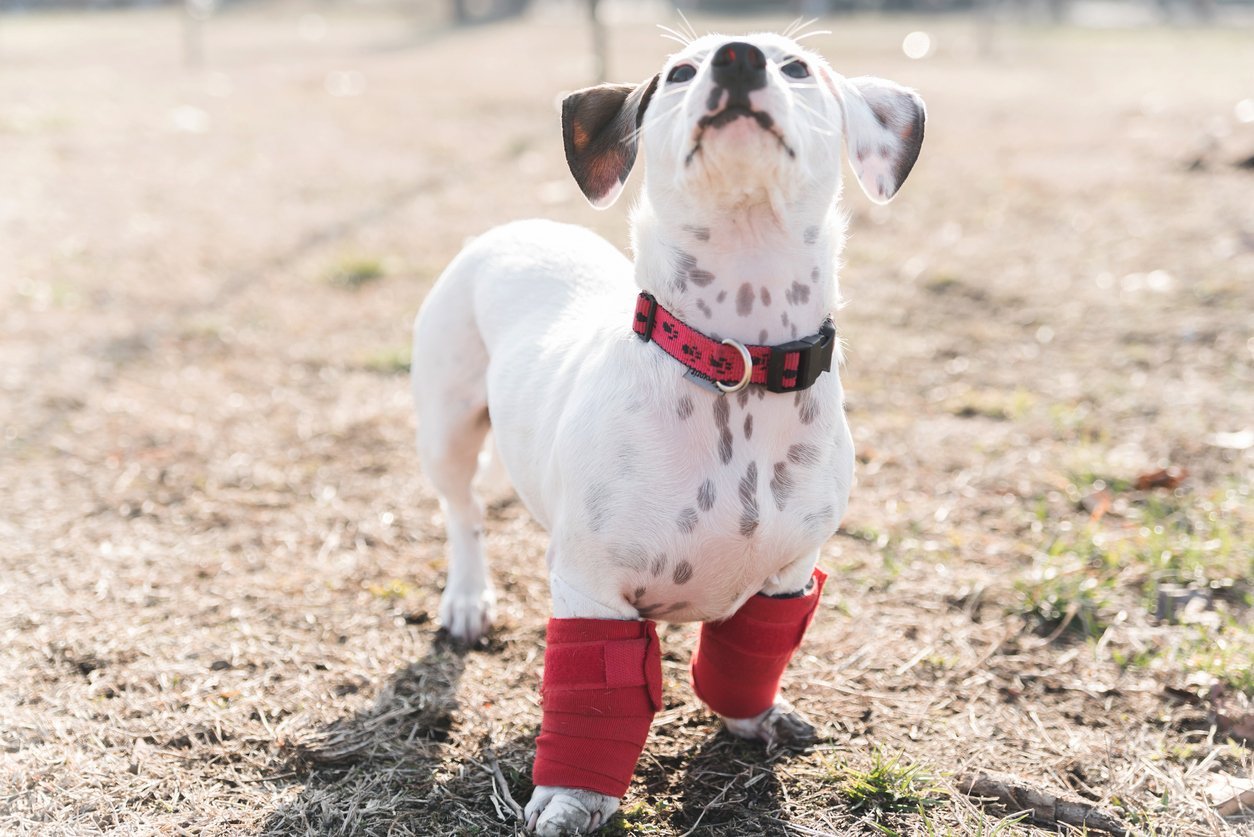
Sometimes prevention isn’t enough.
But don’t beat yourself up; you’ve done everything you could.
It’s time to head back to the vet and trust their skill and experience!
To help you out, here’s a quick table that describes some of the most commonly used treatments for animal health issues that require further veterinary care.
| Treatment | Description |
| Rest | The oldest trick in the book is to recommend that your animal gets plenty of rest. This gives their body the best chance to heal itself. |
| Braces or Splints | Vets use braces and splints to immobilize certain body parts or provide support and compression to others. They help to reduce pain, keep your animal mobile, improve recovery times, and/or reduce further damage. |
| Medicines | Mesotherapy and non-steroidal anti-inflammatory drugs (NSAIDs) are often prescribed to help manage pain and inflammation in affected areas. They can be injected or served orally. |
| Alternative medicine | Your vet might advise alternative practices such as homeopathic medicine or trips to a chiropractor, acupuncturist, or massage therapist. These are non-invasive, natural ways to treat pain and disorders. |
| Surgery | The last resort is surgery. These invasive procedures aim to correct the root cause behind your animal’s health problems. Depending on your animal’s species and the type and extent of their condition, there are many different surgical operations available. Your vet will advise you on the best choice. |
Summing up the Tips From Our Animal Health Partners
Learning to take care of your animals like a pro isn’t an easy task…
But luckily for your adorable animals, you’ve found this blog post and read it all the way to the end. You deserve a huge congrats for the commitment. ✋
And as a token of our appreciation, here’s a quick recap of the six tips from our animal health partners:
Dogs
- Never underestimate luxating patella and arthritis.
- Big dogs, pugs, and bulldogs are at high risk of hip dysplasia.
Cats
- Build your pet a safe play space.
- Feed your feline friends a fully raw diet.
Horses
- Be on the constant lookout for laminitis.
- Take outstanding care of your sport horses.
If you follow this advice and make an oath to live by our four general preventative measures (proper exercise, a balanced diet, loads of affection, and joint supplements), you’ll become a healing force that helps your animals live a longer, healthier, and happier life.
One last thing — don’t be shy to contact our friendly team should you have any further questions about animal health or supplements!
Newsletter Signup
Subscribe to our newsletter to receive the latest news and exclusive offers.
.jpg?height=2000&name=Cliick_Integricare-DISPLAY-REVISEDV2%20(1).jpg)
Proactive & Therapeutic Joint Supplements
When given daily, Integricare joint supplements recover bone and joint injuries faster and help prevent mobility injuries from happening in the first place.

